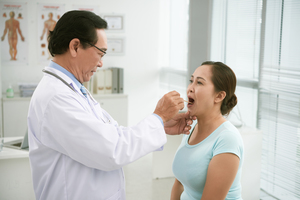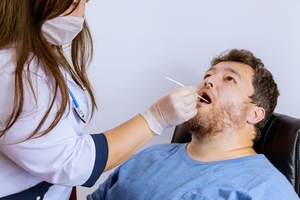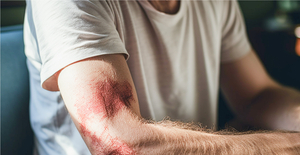Microneedling
Everything you need to know about microneedling
You may have heard of a technique used by dermatologists known as microneedling. Microneedling was first used aesthetically to rejuvenate the skin; however, dermatologists are now using the procedure for a much wider variety of skin conditions, reports the National Institute of Health (NIH)
What is microneedling?
Microneedling is a relatively new procedure that can help improve many different skin conditions. It involves puncturing the top layer of skin with several tiny needles to stimulate a cascade of healing processes. Microneedling can help with the appearance of skin that has been damaged by acne scars, pregnancy-related skin conditions, surgical scars, melasma, and enlarged pores. Experts in the Dermatologic Surgery journal note it can also stimulate general skin rejuvenation.
What happens during a microneedling procedure?
According to the NIH, during a microneedling procedure, a dermatologist coats a targeted area of skin (most commonly the face) with a serum that has an anesthetic agent as an ingredient. This causes the skin to go numb so that you don’t feel pain during the procedure. Then, a dermatologist uses a specialized tool embedded with needles to create “micropunctures” in your skin. You do not need to do anything specific to prepare for microneedling, but afterward, you will need to use sunscreen and avoid the sun as much as you can while your skin heals.
How does microneedling work?
The small injuries to the skin’s surface made by microneedling do not cause significant damage. Instead, they cause slight bleeding and trigger a chain reaction of growth factors, collagen, and elastin to come to the surface of the skin to begin repairing and remodeling. After the skin heals, it has a tighter, rejuvenated appearance, reducing the appearance of scars and fine lines, notes the NIH.
What are the side effects of microneedling?
The procedure is very safe, with a few minor side effects such as redness, irritation, swelling, and fluid leakage as the skin heals. These effects go away on their own after a few days. Because needles are used to puncture the skin, there is also an infection risk—however, the risk is low if microneedling is done by a board-certified dermatologist. An at-home alternative to microneedling, which uses a device called a home roller, may be more likely to cause infection because the needles tend to be duller and not reliably sterilized, according to the American Academy of Dermatology.
What are the benefits of microneedling?
There are many benefits of microneedling. First, it is a minimally-invasive procedure that can be carried out within a short period. It is appropriate for the treatment of several different medical conditions, as well as for the general improvement of your skin’s appearance. Unlike some other procedures in aesthetic dermatology, microneedling has also been shown to have long-lasting effects, with experts noting that skin tightening can last 5 to 7 years.
What is the cost of microneedling?
Microneedling is an elective skin procedure, so it is generally not covered by insurance. You may pay “out of pocket” for a single microneedling session or a bundle of sessions. Cost estimates by Dermapen, a company that sells microneedling tools, range from $100 to $700 per session.
Find Microneedling near you
- Alabama
- Alaska
- Arizona
- Arkansas
- California
- Colorado
- Connecticut
- Delaware
- Florida
- Georgia
- Hawaii
- Idaho
- Illinois
- Indiana
- Iowa
- Kansas
- Kentucky
- Louisiana
- Maine
- Maryland
- Massachusetts
- Michigan
- Minnesota
- Mississippi
- Missouri
- Montana
- Nebraska
- Nevada
- New Hampshire
- New Jersey
- New Mexico
- New York
- North Carolina
- North Dakota
- Ohio
- Oklahoma
- Oregon
- Pennsylvania
- Rhode Island
- South Carolina
- South Dakota
- Tennessee
- Texas
- Utah
- Vermont
- Virginia
- Washington
- Washington DC
- West Virginia
- Wisconsin
- Wyoming
Microneedling FAQs
What is microneedling?
Microneedling is a skincare procedure that involves making tiny punctures on the surface of your skin. These small injuries cause slight bleeding and redness, and they draw a host of growth factors and repair cells to the skin surface. Microneedling can stimulate collagen production, which can help improve the appearance and tightness of the skin, notes the NIJ.
What is pricking?
You may have heard of a procedure known as pricking. This was likely a reference to a dermatologic technique known as microneedling, which involves many tiny sterilized needles puncturing or “pricking” the skin surface, notes the AAD. These small punctures trigger your body’s healing response, which can help improve the appearance of skin damaged by acne, stretch marks, melasma, surgical scars, or enlarged pores.
How much is microneedling?
The microneedling cost depends on the area of the body you are getting treated (e.g., your face versus your legs) and the number of sessions that you’re anticipating. According to estimates by Dermapen, the cost ranges from $100 to $700 per session. Insurance typically does not cover the cost of microneedling because it is considered to be an elective, aesthetic procedure.
Does microneedling hurt?
Microneedling does involve puncturing the skin with tiny needles, so it can be a bit uncomfortable. However, experts from NIH note that pain is minimal during the procedure because a topical anesthetic (skin-numbing serum) is used beforehand. Depending on how your skin reacts to the procedure, you may have a bit of swelling or irritation of your skin for a few days in the area where you received the treatment, but it should not be particularly painful.
What is derma rolling?
Derma rolling is a type of dermatologic technique also known as microneedling. Microneedling uses many different needles to make tiny punctures on the skin surface. These small wounds kick off a rapid healing process, inviting skin-repair elements like collagen and elastin to the puncture sites, notes the AAD. Some people use a tool known as a derma roller to carry out microneedling at home, but it’s usually safest when performed by a board-certified dermatologist.
Where can I get microneedling near me?
If you have been considering a microneedling facial or another type of microneedling, you’re likely eager to get started. However, it can sometimes be challenging to find a dermatologist, or another healthcare provider, who performs the procedure. When looking for top-rated providers in your local area, use the Solv care locator tool to instantly connect with the service you desire.
Solv has strict sourcing guidelines and relies on peer-reviewed studies, academic research institutions, and medical associations. We avoid using tertiary references.
Everyday Healthcare, Simplified
Expert advice to help you live your best life








